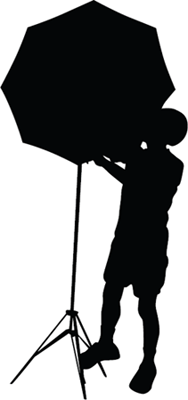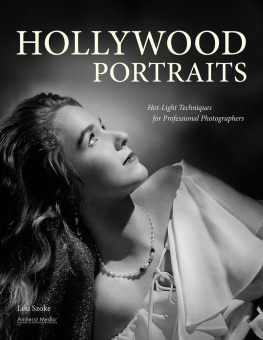Hollywood Lighting from the Silent Era to Film Noir

Film and Culture/John Belton, General Editor
Film and Culture / Edited by John Belton
A SERIES OF COLUMBIA UNIVERSITY PRESS
What Made Pistachio Nuts? Early Sound Comedy and the Vaudeville Aesthetic
HENRY JENKINS
Showstoppers: Busby Berkeley and the Tradition of Spectacle
MARTIN RUBIN
Projections of War: Hollywood, American Culture, and World War II
THOMAS DOHERTY
Laughing Screaming: Modern Hollywood Horror and Comedy
WILLIAM PAUL
Laughing Hysterically: American Screen Comedy of the 1950s
ED SIKOV
Primitive Passions: Visuality, Sexuality, Ethnography, and Contemporary Chinese Cinema
REY CHOW
The Cinema of Max Ophuls: Magisterial Vision and the Figure of Woman
SUSAN M. WHITE
Black Women as Cultural Readers
JACQUELINE BOBO
Picturing Japaneseness: Monumental Style, National Identity, Japanese Film
DARRELL WILLIAM DAVIS
Attack of the Leading Ladies: Gender, Sexuality, and Spectatorship in Classic Horror Cinema
RHONA J. BERENSTEIN
This Mad Masquerade: Stardom and Masculinity in the Jazz Age
GAYLYN STUDLAR
Sexual Politics and Narrative Film: Hollywood and Beyond
ROBIN WOOD
The Sounds of Commerce: Marketing Popular Film Music
JEFF SMITH
Orson Welles, Shakespeare, and Popular Culture
MICHAEL ANDEREGG
Pre-Code Hollywood: Sex, Immorality, and Insurrection in American Cinema, 19301934
THOMAS DOHERTY
Sound Technology and the American Cinema: Perception, Representation, Modernity
JAMES LASTRA
Melodrama and Modernity: Early Sensational Cinema and Its Contexts
BEN SINGER
Wondrous Difference: Cinema, Anthropology, and Turn-of-the-Century Visual Culture
ALISON GRIFFITHS
Hearst Over Hollywood: Power, Passion, and Propaganda in the Movies
LOUIS PIZZITOLA
Masculine Interests: Homoerotics in Hollywood Film
ROBERT LANG
Special Effects: Still in Search of Wonder
MICHELE PIERSON
Designing Women: Cinema, Art Deco, and the Female Form
LUCY FISCHER
Cold War, Cool Medium: Television, McCarthyism, and American Culture
THOMAS DOHERTY
Katharine Hepburn: Star as Feminist
ANDREW BRITTON
Silent Film Sound
RICK ALTMAN
Home in Hollywood: The Imaginary Geography of Hollywood
ELISABETH BRONFEN
Hollywood and the Culture Elite: How the Movies Became American
PETER DECHERNEY
Taiwan Film Directors: A Treasure Island
EMILIE YUEH-YU YEH AND DARRELL WILLIAM DAVIS
Shocking Representation: Historical Trauma, National Cinema, and the Modern Horror Film
ADAM LOWENSTEIN
China on Screen: Cinema and Nation
CHRIS BERRY AND MARY FARQUHAR
The New European Cinema: Redrawing the Map
ROSALIND GALT
George Gallup in Hollywood
SUSAN OHMER
Electric Sounds: Technological Change and the Rise of Corporate Mass Media
STEVE J. WURTZLER
The Impossible David Lynch
TODD MCGOWAN
Sentimental Fabulations, Contemporary Chinese Films: Attachment in the Age of Global Visibility
REY CHOW
Hitchcocks Romantic Irony
RICHARD ALLEN
Intelligence Work: The Politics of American Documentary
JONATHAN KAHANA
Eye of the Century: Film, Experience, Modernity
FRANCESCO CASETTI
Shivers Down Your Spine: Cinema, Museums, and the Immersive View
ALISON GRIFFITHS
Weimar Cinema: An Essential Guide to Classic Films of the Era
NOAH ISENBERG
African Film and Literature: Adapting Violence to the Screen
LINDIWE DOVEY
Film, A Sound Art
MICHEL CHION
Film Studies: An Introduction
ED SIKOV
Patrick Keating
Hollywood Lighting from the Silent Era to Film Noir

Columbia University Press New York

Columbia University Press
Publishers Since 1893
New York Chichester, West Sussex
E-ISBN 978-0-231-52020-1
Copyright 2010 Columbia University Press
All rights reserved
cup.columbia.edu
The author and Columbia University Press gratefully acknowledge the support of two grants from the Trinity University Department of Academic Affairs and the University Department of Communication in the publication of this book.
Library of Congress Cataloging-in-Publication Data
Keating, Patrick, 1970
Hollywood lighting from the silent era to film noir / Patrick Keating.
p. c.m
Includes bibliographical references and index.
ISBN 978-0-231-14902-0 (cloth : alk. paper)ISBN 978-0-231-14903-7 (pbk. : alk. paper)ISBN 978-0-231-52020-1 (ebook)
1. CinematographyLighting. 2. Hollywood (Los Angeles, Calif.)History 1. Title.
2009015406
A Columbia University Press E-book.
CUP would be pleased to hear about your reading experience with this e-book at .
References to Internet Web sites (URLs) were accurate at the time of writing. Neither the author nor Columbia University Press is responsible for URLs that may have expired or changed since the manuscript was prepared.
For my mother

Contents
W hen I was young, my parents, Maria and Dennis, bought me a VHS tape of The Third Man. Little did they know that I would watch the film repeatedly, subjecting the entire family, including my sisters, Coleen and Amy, to hours and hours of zither music. It wasnt the zither music that fascinated meit was the cinematography. Without my familys patience and support, I never would have learned to love the art of lighting, and this book would not exist.
When I went to college, I already knew that I wanted to study film. Once at Yale, taking challenging, thought-provoking classes with Scott Bukatman, David Rodowick, and Angela Dalle Vacche, I began to think of film as a socially significant form of cultural expression. After graduating, I returned to my native Los Angeles and earned an M.F.A. in film production from the University of Southern California. USC gave me the opportunity to get behind the camera and study cinematography directly, under the guidance of cinematographers Woody Omens and Judy Irola. My thinking about film was further shaped by Ivan Passer, Bruce Block, and Rick Jewell. I also collaborated with several talented peers, including Jordan Hoffman, Dionne Bennett, Camille Landau, Michael Friedrich, Wei-shan Noel Yang, Benjamin Friedman, Mark Skoner, Chris Komives, and (outside USC) Daria Martin.
This book is based on the dissertation I wrote while at the University of WisconsinMadison. I had the ideal advisor for the project, David Bordwell, whose thorough knowledge of Hollywood film history is matched by his infectious enthusiasm for the art of film. Davids work is a constant reminder that film studies can be both intellectually ambitious and enjoyable. I feel special gratitude toward Lea Jacobs and Vance Kepley, who nurtured this project in its early stages and served on my committee. Ben Singer shaped my thoughts about lighting in theater, painting, and photography. In addition, I was fortunate to be surrounded by great minds and great teachers, including Nol Carroll, Malcolm Turvey, Kristin Thompson, Ben Brewster, J. J. Murphy, Kelley Conway, Lester Hunt, and the late John Szarkowski.
In my teaching career I have received warm support from several colleagues, and I want to thank in particular Jeff Smith, Scott Bukatman, Kristi McKim, Bill Christ, and Jarrod Atchison. I also consider it a privilege to have taught hundreds of smart, engaging students, who have taught me much about the cinema.
Next page










